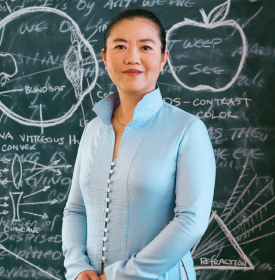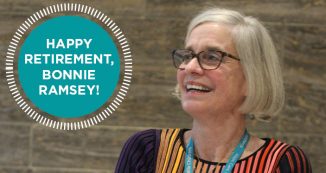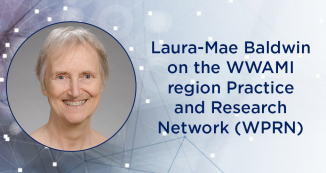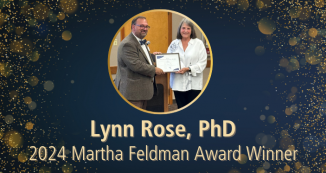30 May Technology Pilot Leads to $1.9 million NSF Award
When you meet Tueng Shen, who is both a medical doctor seeing patients and a researcher and engineer, she makes you comfortable right away.
She uses her own story of straddling cultures to illustrate a special strength of the translational sciences world, where she feels her own straddling of engineering and clinical practice is celebrated and encouraged by the Institute for Translational Health Sciences. Some of that straddling helped shepherd a dramatic new biosensor technology for a contact lens.
“When I came to this country at 18, I didn’t speak any English,” Shen said. She attended Wellesley College and then graduate school at the Massachusetts Institute of Technology to study medical engineering. For a little while, she experienced that disorienting feeling of being lost without the right words. Now, when she has to explain an engineering concept to a conference room full of medical doctors (or vice versa), she knows they may feel lost. She has patience with translation and the notion of differing cultures within research.
Of course, literal translation of language is not the point of ITHS. But mixing academic cultures and smoothing pathways for ideas is precisely what ITHS nurtures. The point of the institute is to translate basic science from discovery to a patient’s bedside in less time. Shortening that journey requires focusing a diversity of experts on practical goals. For that, they must use a common language.
Shen’s journey with ITHS began in 2007, when she remembers being a junior faculty member and learning of some other peers working on ideas about transmitting wireless signals to and from a contact lens in a human eye. As an ophthalmologist, Shen brought her own clinical practice experience and a sense of urgency to the early brainstorming about the lens.
What could they learn from patients if they had sensing capacity in the lens? Working with several colleagues, including Brian Otis and Babak Parviz from the UW College of Engineering, the team decided to apply for a $10,000 ITHS grant for technology to try to assemble some of the building blocks that could potentially help prove the lens concept. At that time, they were hoping the lens would sense what is called the intraocular pressure in the eye. Pressure that is too high in the eye can cause glaucoma, which threatens vision.
“For me to be successful in my field and get a research grant, I needed to gain attention. One of the challenges of being at the interface (between medicine and engineering) is that it is hard. We needed very critical data from a small device. We needed to build one of the components. That’s why we needed the $10,000,” she recalled.
After getting the ITHS grant in 2008, the team succeeded in building some of what they needed to prove to other funding agencies that they had a practical potential device.
During further brainstorming, they tweaked their goal and targeted sensing the glucose level in the tears of the eye. Patients with diabetes, who must measure their blood glucose, could benefit from having a more accurate and more consistent measure. The level in the tears could be a substitute for the blood-level measurement. In the US today, there are an estimated 18.8 million adults with diabetes . For some of them, daily measurements of blood-glucose are required.
Shen and three colleagues won a National Science Foundation grant for $1.9 million for what they call the “Second Window,” a contact lens that will sense glucose levels and wirelessly transmit these data.
“The construction of such a system constitutes a revolutionary step forward in creating non-invasive intelligent interfaces with the human body. It allows for collection of previously inaccessible and potentially crucially important biomedical data,” wrote Babak Parviz, who is Principal Investigator on the grant. Shen and two others – engineering professors Brian Otis and Buddy Ratner – are the three Co-Principal Investigators.
Their device is due to be completed by the end of 2013. Private companies interested in developing the device for commercial use are already in contact with the University of Washington, Shen said.
For the millions of Americans who must use insulin to control their diabetes, the promise of better monitoring means they might control their disease more finely and prevent side effects. Diabetes is one of the leading causes of new blindness among US adults. Other complications include heart disease and kidney failure.
“We can learn amazing things from having a continuous window onto the glucose levels. In the past, patients might get measurements four times a day, now it could be monitored thousands of times per day non-invasively,” Shen said. “We can learn a lot about a disease process with this information because it has never been available to us in the past. That’s why we call it a second window. It is another window into their dynamic health.”
From her position now as an associate professor, Shen is very grateful for the ITHS help that her team received on its journey. She hopes to provide mentoring and advice to others who are straddling medicine and engineering. Her own biography includes her doctorate in medical engineering from MIT and a medical degree from Harvard.
While she loves research, she spends most of her time caring for patients. She performs cataract surgery and heads the UW Refractive Surgery program. Balancing her many interests is not easy, but she thanks the Dean of UW Medicine for helping her to feel valued.
“I would like to acknowledge Dean Paul Ramsey, dean of UW Medicine, for his strong support from the very beginning of my career at UW as a junior faculty. He has always encouraged and fostered the effort of interdisciplinary team work,” she said. Ramsey is both CEO of UW Medicine and dean of the School of Medicine.
For deeper scientific detail on this research and working across disciplines, see these articles:
- From IEEE Journal of Solid State Circuits, November 2011, Wireless Intraocular Pressure/Temp Monitor.
- From Science Careers, April 2012, Perspective on straddling disciplines
The project described was supported by the National Center for Research Resources and the National Center for Advancing Translational Sciences, National Institutes of Health, through Grant UL1RR025014. The content is solely the responsibility of the authors and does not necessarily represent the official views of the NIH.








